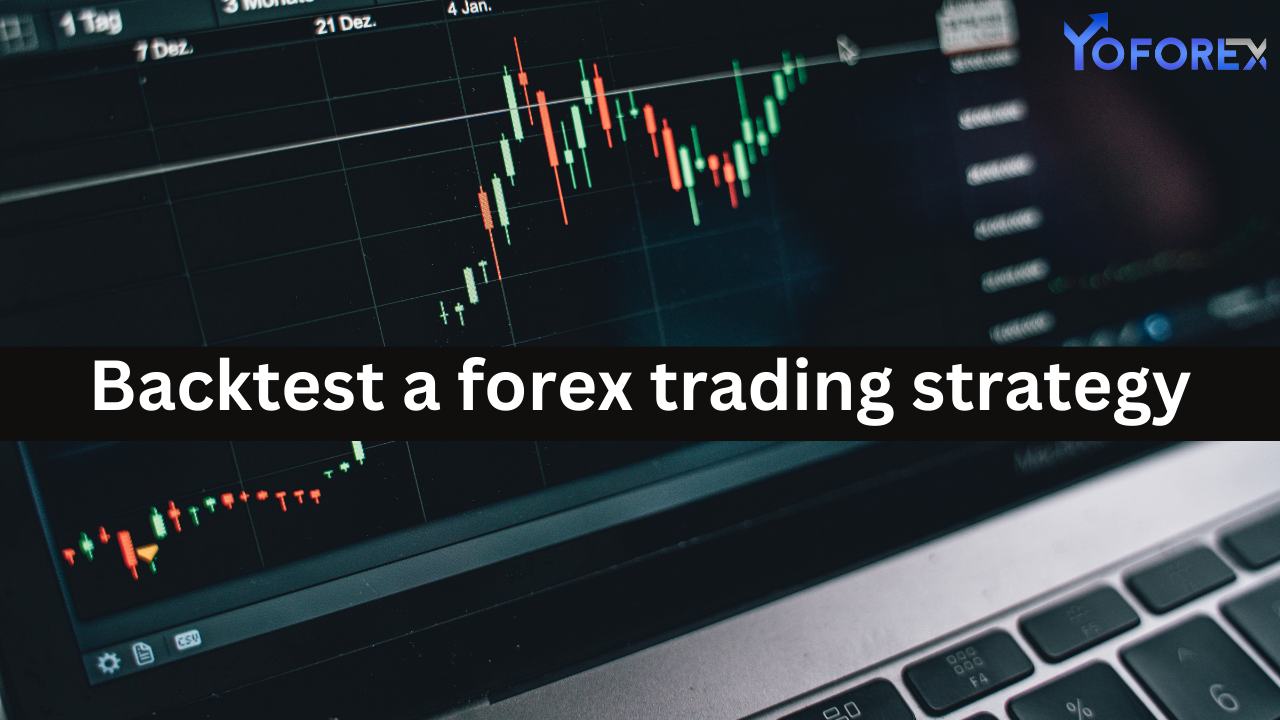Backtesting is a crucial step for any trader seeking to evaluate and refine a forex trading strategy. It involves testing a strategy on historical data to determine its viability before applying it in live markets. Effective backtesting can save traders from costly mistakes and provide insights into a strategy’s strengths and weaknesses. In this guide, we’ll walk you through the key steps to backtest a forex trading strategy effectively.
For more insights and resources on forex trading strategies, visit YoForex.net.

1. Understand Your Trading Strategy
Before you begin backtesting, you need a clear understanding of your trading strategy. This includes:
- Rules for Entry and Exit: Define specific criteria for entering and exiting trades. These could be based on technical indicators, price patterns, or fundamental analysis.
- Timeframe: Decide the timeframe you’ll be trading on, such as 1-hour, daily, or weekly charts.
- Risk Management: Determine your position sizing, stop-loss levels, and take-profit targets.
- Market Conditions: Understand whether your strategy is designed for trending, ranging, or volatile markets.
2. Choose the Right Tools and Data
Effective backtesting requires reliable tools and accurate historical data. Here are some options:
- Charting Platforms: Popular platforms like MetaTrader 4/5, TradingView, and NinjaTrader offer robust backtesting capabilities.
- Historical Data: Ensure you have access to high-quality historical data for the currency pairs and timeframes you want to test.
- Backtesting Software: Advanced tools like Forex Tester or QuantConnect can automate the backtesting process, saving time and improving accuracy.
3. Set Up Your Backtesting Environment
To ensure consistency and accuracy, create a structured backtesting environment:
- Isolate Variables: Test one strategy at a time to avoid overlapping results.
- Simulate Realistic Conditions: Include spreads, slippage, and commissions to replicate real market conditions.
- Define Test Period: Choose a period that includes various market conditions, such as uptrends, downtrends, and consolidations.
4. Manual vs. Automated Backtesting
Manual Backtesting
Manual backtesting involves scrolling through historical charts and identifying trades based on your strategy’s rules. It helps you:
- Develop a deeper understanding of your strategy.
- Identify patterns and nuances that automation might miss.
However, it’s time-consuming and prone to human error.
Automated Backtesting
Automated backtesting uses algorithms to test your strategy on historical data. It:
- Saves time and provides faster results.
- Allows for testing on multiple pairs and timeframes simultaneously.
- Eliminates human bias.
To automate backtesting, you’ll need coding skills or access to a platform that supports strategy scripting.
5. Record and Analyze Results
Documenting your backtesting results is essential for evaluating your strategy’s performance. Key metrics to track include:
- Win Rate: Percentage of winning trades.
- Profit Factor: Ratio of gross profit to gross loss.
- Drawdown: Maximum loss from peak equity.
- Expectancy: Average profit or loss per trade.
- Risk-Reward Ratio: Relationship between potential profit and risk for each trade.
Use spreadsheets or software to log each trade, including entry/exit points, profit/loss, and notes on market conditions.
6. Evaluate and Refine Your Strategy
After analyzing your backtesting results, identify areas for improvement:
- Optimize Parameters: Adjust variables like indicator settings or stop-loss distances to enhance performance.
- Identify Weaknesses: Look for patterns in losing trades and modify your strategy to address them.
- Validate Results: Retest the strategy on different datasets to ensure consistency and robustness.
Avoid over-optimization, also known as curve-fitting, which can make your strategy too specific to historical data and less effective in live markets.
7. Use Monte Carlo Simulations
Monte Carlo simulations add an extra layer of robustness to your backtesting results. By randomizing trade sequences, these simulations help:
- Assess the impact of luck and variance.
- Identify potential drawdowns in different market scenarios.
Many advanced backtesting platforms offer Monte Carlo simulation features.
8. Backtest Multiple Market Conditions
Markets change over time, so it’s essential to test your strategy under various conditions:
- Trending Markets: Check performance during strong uptrends and downtrends.
- Range-Bound Markets: Test in sideways markets with low volatility.
- High-Volatility Periods: Analyze how your strategy performs during news events or economic crises.
9. Compare Against Benchmarks
Compare your strategy’s performance against benchmarks, such as:
- Buy-and-Hold: For long-term strategies, assess whether your approach outperforms a simple buy-and-hold strategy.
- Other Strategies: Test alternative strategies to ensure yours offers a competitive edge.
10. Transition to Forward Testing
Once your backtesting results are satisfactory, transition to forward testing in a demo account:
- Paper Trading: Trade your strategy in real-time with virtual money to verify its performance.
- Evaluate Execution: Assess whether slippage, spreads, or psychological factors affect your results.
- Refine Further: Use insights from forward testing to make final adjustments before going live.
Common Pitfalls to Avoid
While backtesting, be mindful of the following pitfalls:
- Data Snooping: Avoid using future data in your analysis.
- Overfitting: Don’t optimize your strategy excessively for past data.
- Neglecting Costs: Include transaction costs, spreads, and slippage in your calculations.
- Emotional Bias: Stay objective and stick to your strategy’s rules.
Conclusion
Backtesting is an invaluable tool for forex traders, offering a glimpse into how a strategy might perform in live markets. By following a structured approach, leveraging the right tools, and analyzing results objectively, you can develop a robust trading strategy with confidence. For additional tips, resources, and strategies to improve your forex trading journey, check out YoForex.net. Remember, no strategy guarantees success, but thorough backtesting significantly improves your chances of achieving consistent profitability in forex trading.
Stay Updated & Download: https://yoforex.net/backtest-a-forex-trading/

